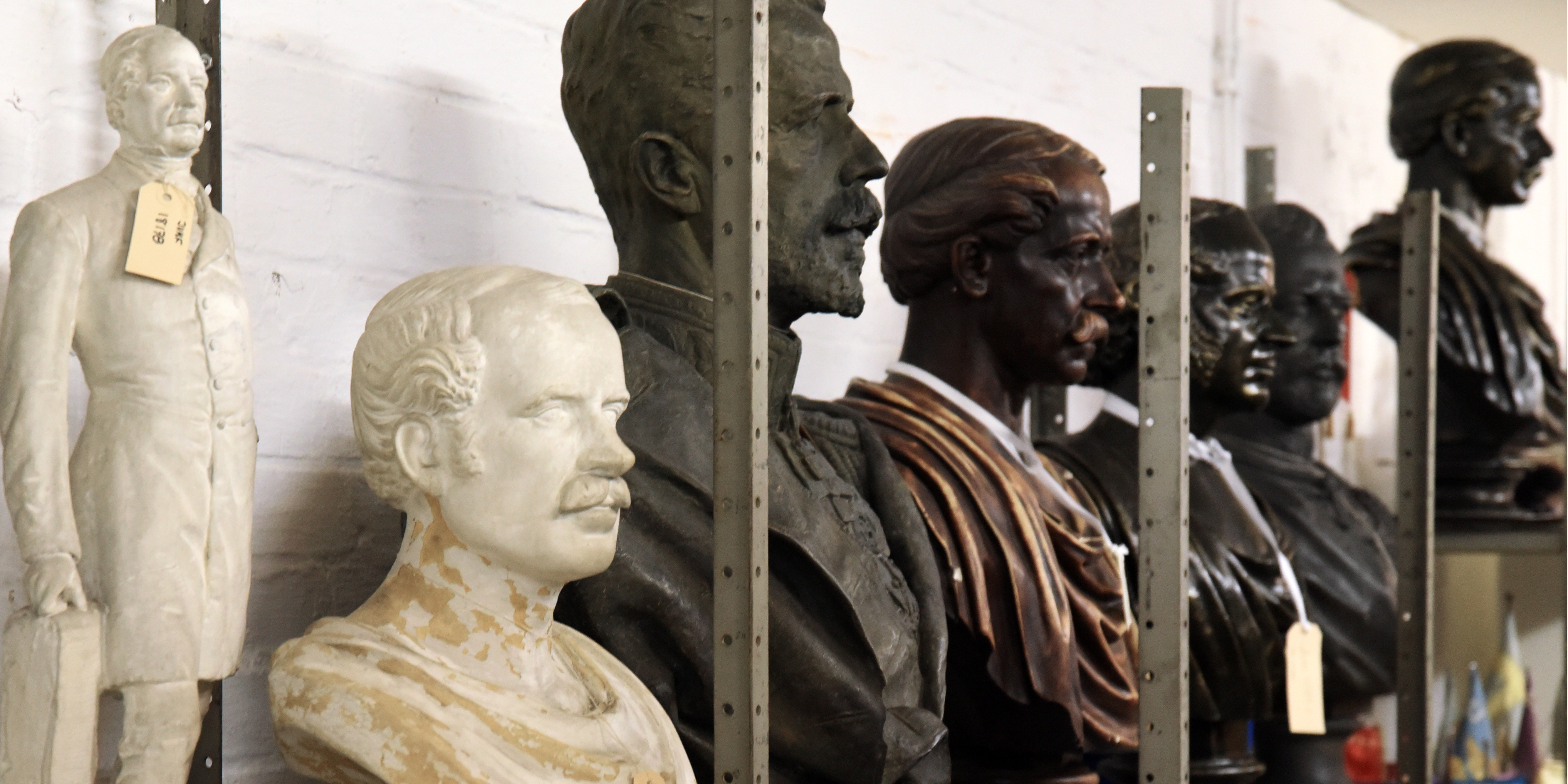
Artefacts
The foundation for the Railway Museum's collection of artefacts was laid in the early 1900s. SJ’s section at the Baltic Exhibition in Malmö in 1914 was particularly important when the museum’s collection began to grow. Today, there are over 25,000 artefacts in the collection, ranging from large steam locomotives to small uniform buttons. Together, they highlight many different aspects of the Swedish railway and its history.
The Swedish Railway Museum’s mission is to collect, present and build knowledge about the Swedish railway and its history. The museum's collection contains artefacts from the beginning of the Swedish railway in the 19th century, all the way to the present day.
In addition to a representative collection of locomotives, wagons, carriages and other railway vehicles, the museum has a large collection of other railway-related items. These include uniforms and workwear, porcelain, clocks, art, textiles, furniture, posters, signs, tools and numerous models of vehicles and buildings.
How can I access the collections?
Our exhibitions are displayed in a former locomotive stable in Gävle. The locomotive stable was previously used to repair and store locomotives, so there is a great deal of space. Unfortunately, it is still only large enough to exhibit a small fraction of the museum’s huge collection.
The Swedish Railway Museum regularly lends out artefacts to other museums and museum railways around the country. We also organise train trips, where you can travel in some of our carriages. In addition, we are working on opening up parts of our storage facilities, so that in the future you will be able to view artefacts that are not currently on display in our exhibitions. In connection with the museum’s grand reopening, our vehicle storage facility at Nynäs in Gävle will also be open to visitors.
DigitaltMuseum is another platform where we make our collection available. At the time of writing, more than 13,000 artefacts have been digitised, so you can explore them whenever and wherever you want. The museum’s curators are also available for anyone who has a question about our collections or anything else related to the Swedish railway, its history and its cultural heritage.

The art collection includes sculptures, paintings and graphics.
How is the collection organised?
We regularly collect new artefacts for the museum. Each new artefact brings new stories and perspectives. Railway history is also what is happening here and now, so we also consider it important to document our own time for the future.
We are delighted that so many private individuals contact us and offer items for our collection. The items offered are discussed at regular collection meetings, where the museum’s curators decide together which artefacts to include in the collection, based on the museum’s collection plan. Questions are asked about the items: Do we already have similar artefacts in the collection? What does the artefact tell us, and does it add new knowledge?
Additional information about the collection process can be found under the “Collection and lending” tab.
What is a museum artefact?
A museum artefact is more than just an object that has ended up in a museum. It is historic testimony, and the museum takes on the responsibility of preserving it for the future. Each new museum artefact is given a unique number, so that it can be identified. The artefact is registered in our database, along with a photo of the item.
The artefact is then put in storage or on display. A museum artefact must be kept as close to its original condition as possible. It must therefore be protected against blows, pests, mould and other factors that could cause the item to deteriorate in any way. It is important that the storage or exhibition facility maintains a suitable indoor climate. The artefact could be damaged if it is stored in a room with the wrong temperature or humidity. The UV rays of the sun could also damage the item. For example, colours and finishes might fade or change in other ways. For this reason, many museum artefacts need to be protected against sunlight. We often wear white cotton gloves when we handle the items. This is done to protect the artefacts from the dirt and grease that we humans always have on our skin, no matter how carefully we wash our hands.
When it comes to museum artefacts, there are also legal issues to consider. The collection is managed by the museum, but is the property of the Swedish people. For example, once an item has been added to the collection, it cannot be discarded at will.
The staff in Gävle are also responsible for SMTM’s collections of artefacts linked to road history and civil aviation. The road collection is located outside Eskilstuna and the civil aviation collection in Rosersberg. However, archives and photos with links to roads and aviation are in Gävle. Read more under Museums and Collections (smtm.se)
At the Swedish Railway Museum, we strive every day to build a collection that best reflects the history of the Swedish railway, to manage it for future generations, and to ensure that as many people as possible can access and enjoy it. Do not hesitate to contact us if you would like to learn more or have an item to offer.